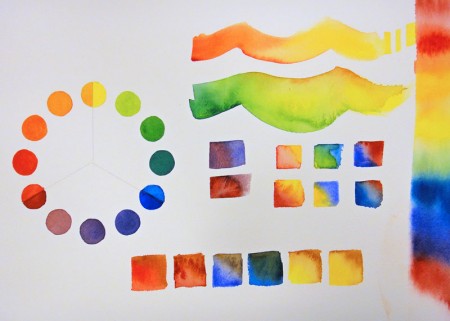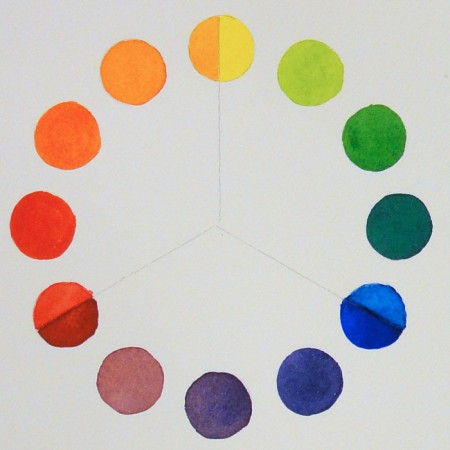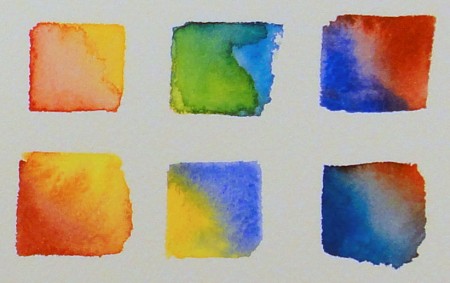 Today was my first watercolor class with Nita Leland. She’s written some terrific books on color, which I’ve enjoyed for several years, and I highly recommend them. I knew she lived near me, so I started investigating and found out she was teaching an 8-week class at a nearby community center, and I squeezed in at the last minute.
Today was my first watercolor class with Nita Leland. She’s written some terrific books on color, which I’ve enjoyed for several years, and I highly recommend them. I knew she lived near me, so I started investigating and found out she was teaching an 8-week class at a nearby community center, and I squeezed in at the last minute.
Taking a class at a community center is a little different than a college class. There were about twenty students yesterday, and only two of us were new to the class. Many of the others have taken the class over and over again for years. It is more of a self-guided painting time with the interaction and critique of an instructor.
I’ve never taken a watercolor class before. I remember doing two or three watercolors back in high school. I decided to take a watercolor class since I thought it might be the closest to painting with ink or dye on fabric. Painting with ink happens to be one of my favorite approaches to painting portraits for quilts, but I actually haven’t done it much over the last five years.
In today’s class, I started by painting a split primary color wheel. This means you have a “warm” and “cool” version for each primary. When it comes time to mix secondary colors, this helps you get a purer, less muddy color. Today I used New Gamboge and Windsor Lemon, Winsor Blue (Green Shade) and French Ultramarine Blue, and Alizarin Crimson and Winsor Red.

After the color wheel, I decided to paint a row of squares mixing both versions of the primaries to see what colors you get. I tried mixing the colors on the paper, allowing them to run together, but I probably should have just mixed them on my palette and painted a solid square. I didn’t necessarily get a good sampling of each secondary color.

Next, I painted squares mixing each of the primaries with Burnt Sienna. Again, I probably should have mixed the color on my palette first.

At the end of class, Nita always does a short critique so everyone can see what others are doing. Since everyone chooses their own source material, it’s fun to see the wide variety of subjects. Then Nita points out areas that are working successfully and she makes suggestions for improvements. She’s much kinder than my college professors!
On the way home, I ran to the library to pick up a few books on watercolor and brush strokes. Can’t wait for next week!